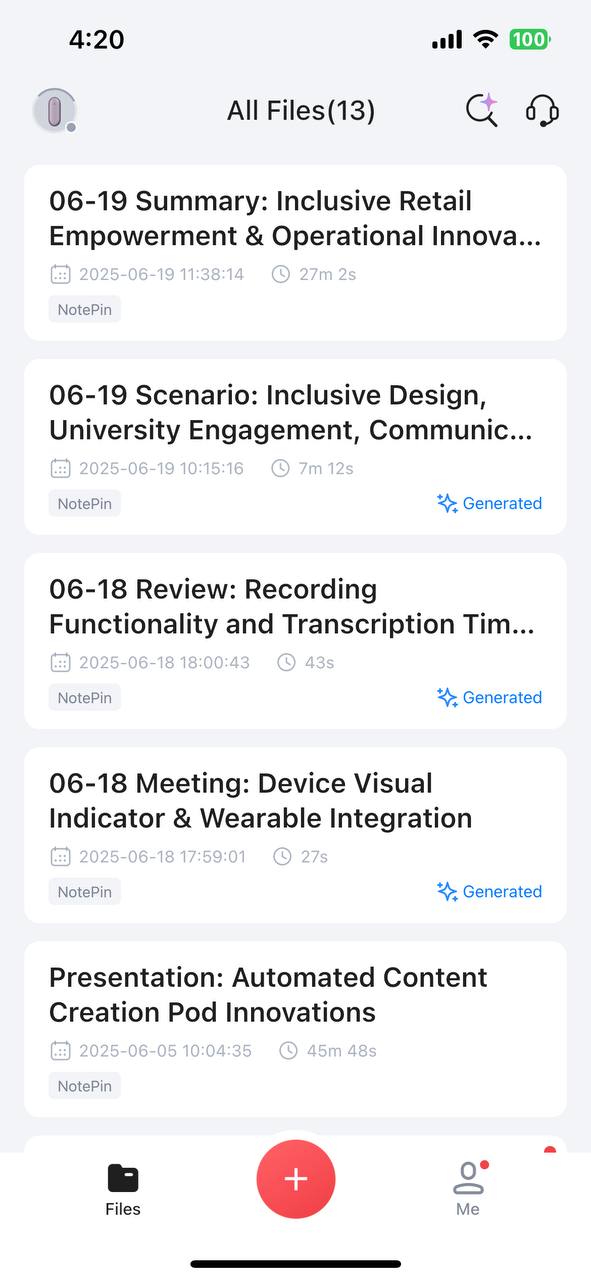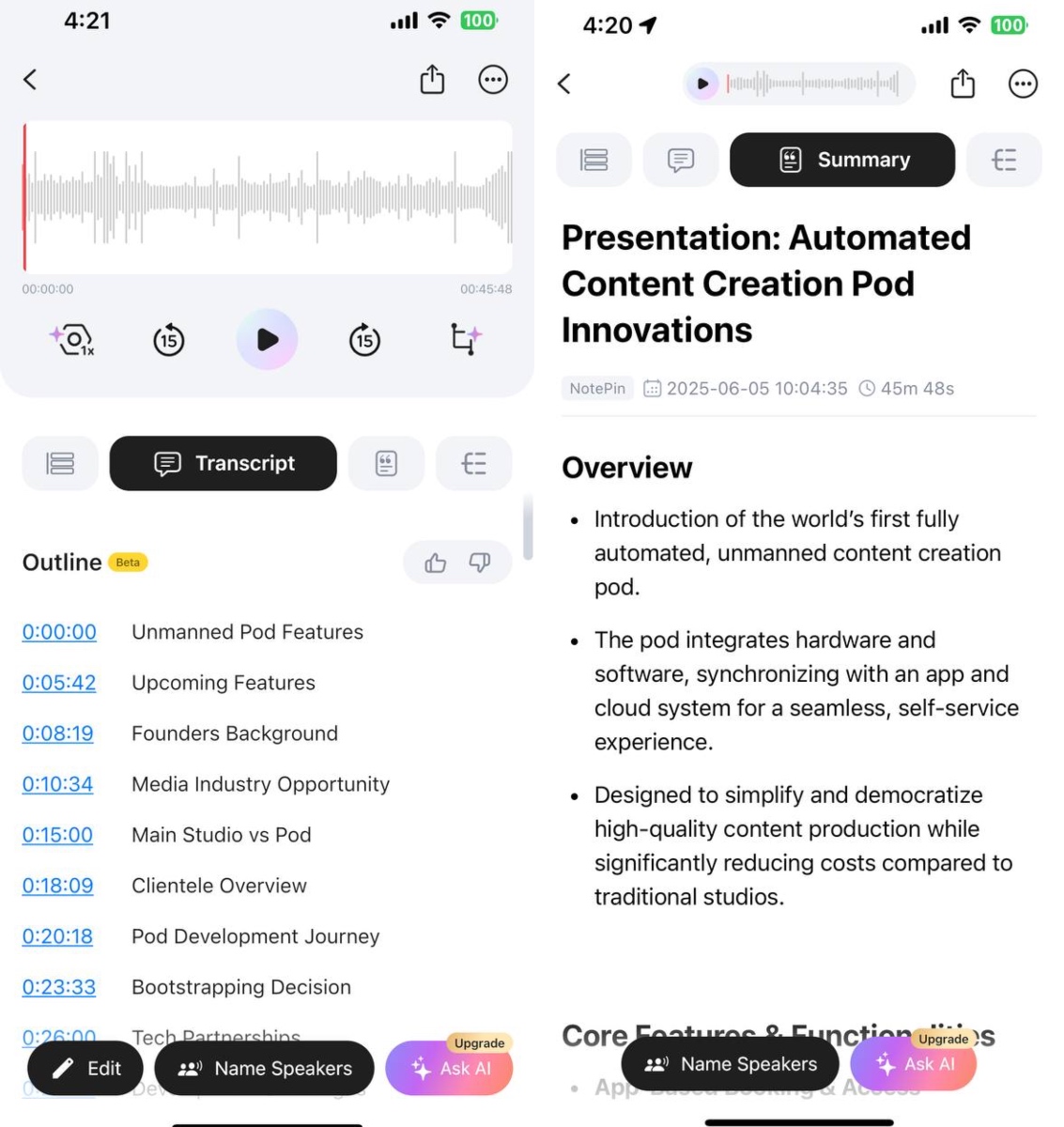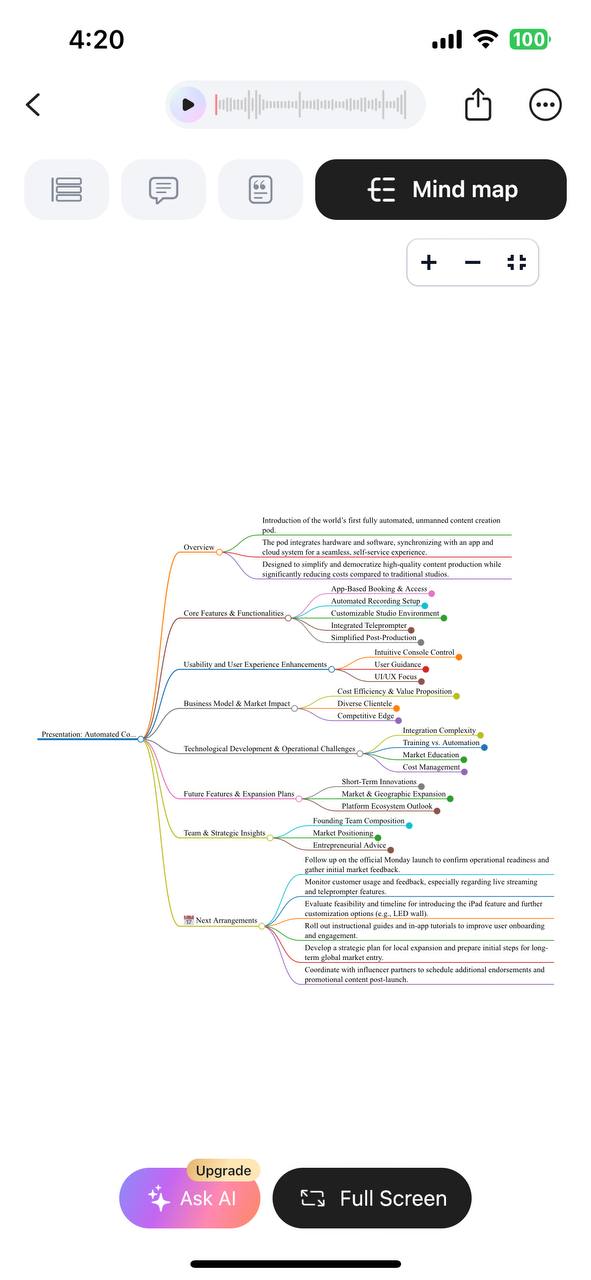This tiny AI-powered voice recorder costs S$200, but is it worth it?
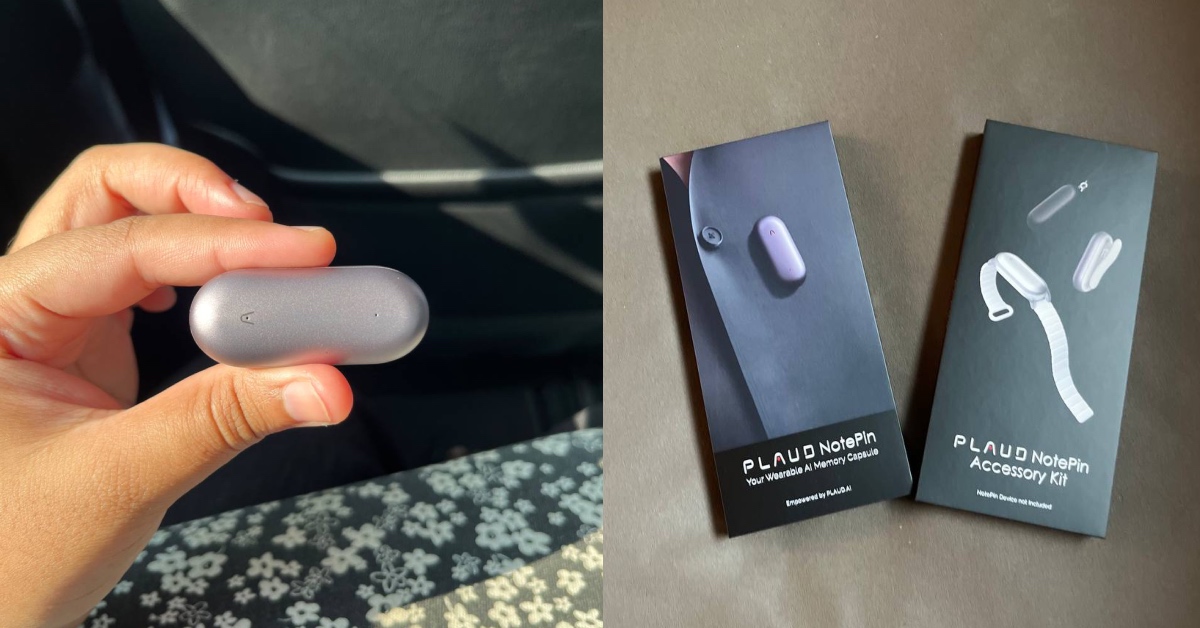
AI this, AI that—you’re probably sick of hearing it everywhere.
But every now and then, a product comes along that is actually useful and shows how AI can simplify your daily routine.
Among them is the Plaud NotePin—it’s a voice recorder priced at S$205 (US$159) with AI smarts that can turn your audio into text, give you a summary, and even pull out the main takeaways.
What is the Plaud NotePin & what does it do?

In short, the Plaud NotePin does exactly what it claims to do, and from the time I’ve spent testing the device, it seems to do it pretty well.
Using it is simple. Just press and hold the NotePin until it vibrates—that’s your cue that it has started recording (you’ll also see a red light turn on).
When you’re done, press it again to stop… and that’s it. There’s no complicated setup, making it an accessible tool even for first-time users.
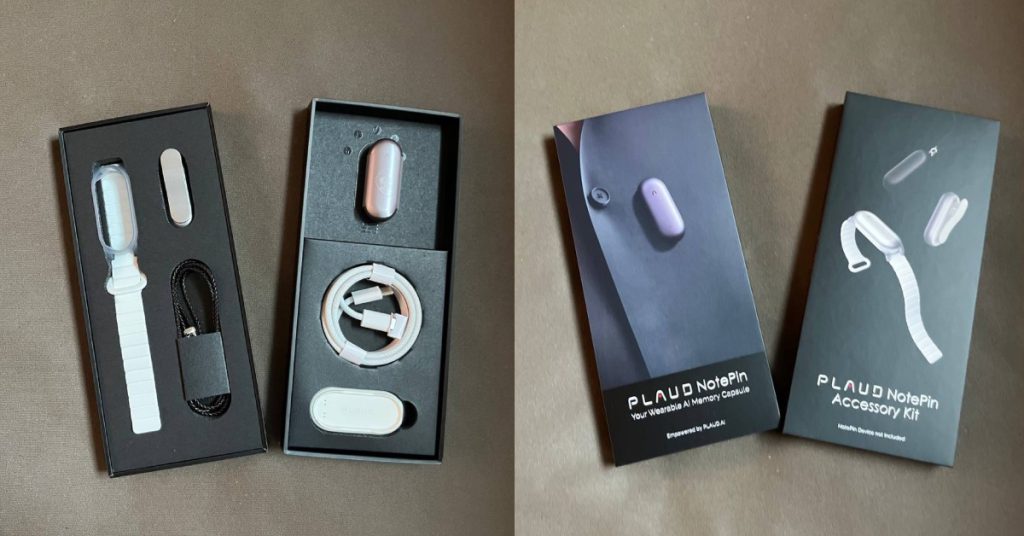
One of the NotePin’s biggest appeals is just how small and lightweight it is—barely the size of a thumb and weighing around 17 grams, it’s almost unnoticeable. And thanks to the accessories that come with the device, you can just about bring it anywhere.
In the box, you’ll get:
- A braided lanyard to wear the NotePin around your neck,
- A wristband so you can wear it like a watch, and
- A clip so you can attach it to your shirt, bag, or anywhere else.
Personally, the lanyard proved to be the most practical option. Wearing the NotePin around my neck made it easily accessible, particularly when I needed to start a recording quickly.
And its battery life is also admittedly impressive: it lasts up to 40 days on standby and 20 hours of continuous recording.
That said, recording is just part of the experience.
To access the AI features like transcription, summarisation, and extracting key insights, you’ll need to use the Plaud app or web platform. And to do so, you’ll need to create an account and link your NotePin to it.
The extra step can feel a little tedious, but I suppose it’s a minor inconvenience considering how much easier the AI features make reviewing your recordings.
Once you’re set up, your recordings sync to the app. From there, you can generate full transcripts with speaker labels, concise summaries, mind maps, and even utilise an “Ask AI” feature that can help you dig deeper into the content. It can generate report emails and documents, among others, saving manual effort.
Depending on the template you select, transcription may take a few minutes to process.
From my time using the app, transcriptions have been accurate, and I haven’t encountered any mistakes or AI hallucinations.
However, it’s worth noting that you only 300 transcription minutes per month and access to a limited set of AI features for free. If you need more, you’ll have to upgrade to a paid plan.
The Pro plan costs S$11.50 per month (or S$136.98 annually) and offers expanded functionality, while the Unlimited plan is priced at S$29.20 per month (or S$349.98 annually) and unlocks all available features.
Is it worth it?
Overall, my experience with the NotePin has been smooth and it has proved to be genuinely useful, from meetings to interviews to capturing spontaneous thoughts on the go.
But it does raise the question: does this really need to be a standalone gadget, especially when smartphones are already capable of doing many of the same things?
iOS 18 and macOS Sequoia already allow you to transcribe and summarise recordings directly within the Voice Memos app, while on Android, Google’s Pixel Recorder app—built into both Pixel phones and the Pixel Watch—offers similarly advanced features.
There are also plenty of third-party apps, like Otter.ai, that provide these capabilities, making them widely accessible across devices.
What smartphones don’t necessarily offer, though, is ease of access. The NotePin’s compact form makes it faster and more convenient to start recording on the go, rather than pulling out your phone from your pocket.
It also offers a comprehensive suite of AI features, going beyond the usual transcription and summaries that most voice recorders provide.
But are these features worth the S$205 price tag? Judging by early user feedback, the NotePin seems to be resonating with many.
When I spoke to Plaud’s founder, Nathan Hsu, he shared that “momentum has been strong” since its launch in August 2024. While he didn’t disclose specific sales figures for the device, he noted that it’s part of the company’s overall shipment of tens of thousands units globally to date.
Apart from the NotePin, the company also offers the Plaud Note, a card-sized voice recorder. It’s larger and less versatile than the NotePin, but it’s designed for more focused, intentional use. Together, these devices have served over 700,000 users globally, with that number quickly approaching the 1 million mark.
Although the company is relatively young—it was launched in December 2021—Nathan shared that it had reached US$10 million in sales as of June 2024, and is now operating at a US$180 million annual revenue run rate, achieving 10 times year-over-year growth for two consecutive years.
“The gap we’re addressing is huge—traditional tools make you document your life, but we want to help you reclaim it.”
And if that sounds like the kind of upgrade your workflow (or life) could use, the Plaud NotePin might just be worth the investment.
- Find out more about the Plaud NotePin here.
- Read other tech reviews we’ve written here.
Featured Image Credit: Vulcan Post


